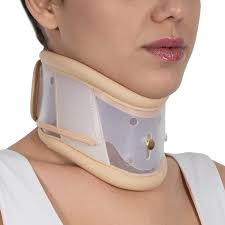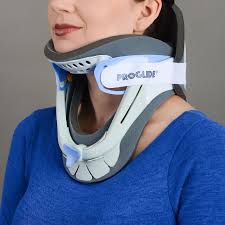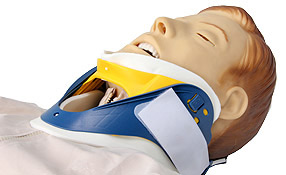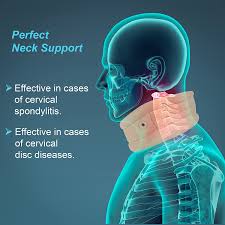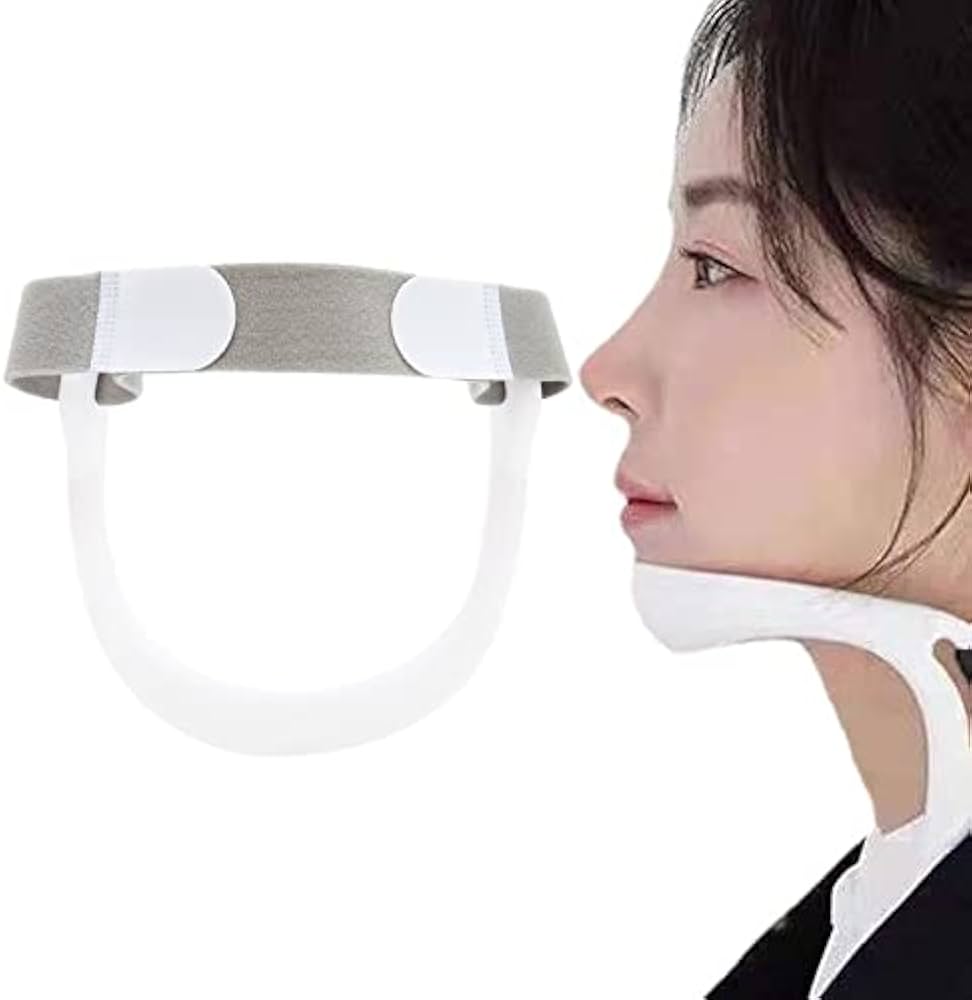

Forward head posture (FHP) is a growing concern in today’s digital age, largely driven by prolonged screen time and poor posture habits.
This condition places excessive strain on the cervical spine, leading to discomfort, muscle fatigue, and long-term structural issues.
Cervical collars have emerged as an effective intervention to alleviate FHP strain.
Nonetheless, you first need to learn how to use cervical collars to fix nerd neck.
This article examines their mechanisms, types, and effectiveness, supported by scientific evidence.
Article Index:
- Understanding Forward Head Posture
- Mechanism of Cervical Collars in FHP Management
- Types of Cervical Collars
- Scientific Evidence Supporting Cervical Collars
- FAQs
- Key Considerations for Use
- Conclusion
Understanding Forward Head Posture
Forward head posture occurs when the head moves forward, misaligning with the spine’s center.
This shift increases the strain on the cervical spine, especially on the C7, C6, and C5 vertebrae.
Research shows that every inch of forward head movement adds 10 pounds of stress to the neck muscles.
According to a study in the Journal of Orthopedic Science, FHP is associated with increased muscle activity in the upper trapezius and sternocleidomastoid, contributing to pain and stiffness.
Left unaddressed, FHP can lead to degenerative changes in the cervical spine and reduced quality of life.
Mechanism of Cervical Collars in FHP Management
Cervical collars are an effective tool for managing forward head posture (FHP) by supporting the neck and promoting proper spinal alignment.
They work through several key mechanisms:
Postural Realignment:
Cervical collars help reposition the head over the spine, reducing the forward tilt that characterizes FHP.
This realignment significantly decreases the gravitational load on the cervical vertebrae, alleviating stress on the spine.
A study published in Spine confirms that proper alignment reduces the mechanical strain experienced by the neck, preventing further degeneration.
Muscle Relaxation:
By providing external support, cervical collars relieve overactive neck muscles that constantly work to hold the head in an incorrect position. This allows the muscles to relax and recover. Research in the Journal of Physical Therapy Science highlights that this relaxation promotes muscle recovery, reducing fatigue and tension.
Pain Relief:
FHP often results in chronic neck pain caused by abnormal movement and muscle strain. Cervical collars limit these movements, reducing discomfort and improving overall neck function. They provide the necessary stability to reduce inflammation and irritation in the soft tissues.
Together, these mechanisms make cervical collars an effective solution for managing FHP. They not only address symptoms but also contribute to long-term improvements in cervical spine health when used appropriately.
Types of Cervical Collars
Different types of cervical collars are designed to address the varying severity of forward head posture (FHP), ensuring proper support and alignment:
- Soft Collars: These foam-based collars provide gentle support for mild cases of FHP. They are lightweight, comfortable, and intended for short-term use. Soft collars are often used as transitional devices during recovery or for temporary relief.
- Rigid Collars: Made from hard plastic with foam padding, rigid collars provide substantial support and restrict neck movement. They are ideal for managing moderate to severe cases of FHP, offering the stability needed to correct alignment while relieving muscle strain.
- Adjustable Collars: These collars feature customizable height and fit options, allowing tailored support for individuals with specific needs. They ensure optimal alignment and comfort for users with varying degrees of FHP.
A study published in Rehabilitation Research and Practice highlights the importance of selecting the appropriate collar type based on the severity of FHP and the patient’s unique requirements.
Choosing the correct collar ensures effective management and minimizes potential risks associated with improper use.
Top 10 Ways Cervical Collars Reduce Neck Pain
Immobilization for Healing
- Cervical collars limit neck movement, preventing excessive motion that could worsen pain or cause further injury. Immobilization gives the neck time to heal properly.
Support for Neck Muscles
- The collar reduces the load on neck muscles, preventing fatigue and spasms. This support allows muscles to rest and recover, minimizing discomfort.
Spinal Alignment Correction
- Cervical collars maintain proper cervical spine alignment, reducing nerve irritation and alleviating conditions like cervical radiculopathy.
Decreasing Inflammation
- By limiting movement and providing support, cervical collars help reduce inflammation in soft tissues, promoting faster healing and pain relief.
Nerve Compression Relief
- Cervical collars relieve pressure on compressed nerves by keeping the spine in a neutral position, reducing radiating pain and tingling sensations.
Preventing Further Damage
- The collar acts as a protective barrier, minimizing the risk of worsening injuries after trauma, such as whiplash injury that causes text neck or fractures.
Reducing Strain During Daily Activities
- Even light activities can strain the neck. Cervical collars help reduce tension during these activities, improving comfort throughout the day.
Encouraging Proper Posture
- Wearing a cervical collar promotes good posture, preventing slouching or awkward positions that can exacerbate neck pain.
Providing Psychological Comfort
- The feeling of support and protection reduces anxiety about movement, making patients more confident during recovery.
Complementing Other Treatments
- Cervical collars are often combined with physical therapy and medication to enhance recovery, providing temporary pain relief while addressing underlying issues.
These benefits make cervical collars a useful tool for short-term neck pain management under medical supervision.
Scientific Evidence Supporting Cervical Collars
Research highlights the effectiveness of cervical collars in alleviating FHP strain:
- A study published in the Journal of Physical Therapy Science found that participants using cervical collars for four weeks showed significant improvements in cervical alignment and reduced forward head tilt.
- Research in Spine demonstrated that wearing a customized cervical collar during smartphone use improved head posture and reduced strain on cervical muscles.
- According to a review in Clinical Biomechanics, cervical collars help redistribute the weight of the head, reducing stress on the lumber spine and adjacent soft tissues.
These findings underscore the role of cervical collars in managing FHP and improving cervical spine health.
FAQs on Cervical Collars and Neck Pain
Q1: How does a cervical collar actually ease forward-head posture strain?
A: By gently limiting end-range neck flexion and chin-jutting, a soft collar reduces the workload on overactive cervical extensors and suboccipitals. The light contact under the jaw acts as tactile biofeedback, reminding you to stack ears over shoulders. With less shear at the lower cervical segments, you’re less likely to crane forward during typing, scrolling, or driving.
Q2: Soft or rigid—what type works best for posture coaching?
A: For everyday posture, choose a soft foam collar. It cues better alignment without “locking” you in place. Rigid or semi-rigid collars are designed for injuries or post-operative immobilization—great for protection, poor for habit change. Think of the soft collar as training wheels: it guides your head position while you relearn neutral mechanics.
Q3: How long should I wear it, and when does it help most?
A: Use short, intentional blocks—about 15–30 minutes—during your chin-forward triggers: laptop sessions, phone use, long commutes. Pair each block with a 30–60-second movement break. Aim for the minimum effective dose and taper as your endurance and awareness improve. Avoid all-day wear; the goal is coaching, not dependence (and typically not during sleep).
Q4: Will wearing a collar weaken my neck muscles over time?
A: Not if you combine it with targeted exercise. Do deep-neck-flexor activation (gentle chin nods), scapular retraction rows, and thoracic extension drills. The collar offloads strain while you rebuild control and endurance. Overuse without training can decondition tissues, so treat the collar as a prompt to move better—not a permanent brace.
Q5: Any fit tips, precautions, and smart add-ons for best results?
A: Fit so the chin rests lightly and you can slide two fingers between collar and neck. Keep your gaze level; lower the screen if your chin tips up. Stop for skin irritation, jaw pain, or dizziness and consult a clinician for persistent symptoms. Stack wins: lumbar support, monitor at eye level, and hourly micro-break timers.
Key Considerations for Use
While cervical collars provide significant benefits, proper use is essential to avoid potential risks and ensure effective outcomes:
- Duration of Use: Prolonged use of cervical collars without medical guidance can result in muscle weakness and dependency. This occurs because the neck muscles rely on external support rather than functioning independently. A study published in the Annals of Rehabilitation Medicine advises limiting the duration of collar use to prevent such complications and emphasizes the importance of supervised usage.
- Complementary Therapies: Using cervical collars alongside physical therapy can greatly enhance their effectiveness. Exercises targeting neck and shoulder muscles help restore strength and flexibility, promoting long-term postural correction. Learn to stretch your upper back to fix fhp. This combined approach ensures that the collar is a temporary aid rather than a permanent solution.
- Individual Assessment: Each case of forward head posture (FHP) is unique. According to the American Journal of Physical Medicine & Rehabilitation, healthcare professionals should thoroughly evaluate the severity of FHP before recommending a specific collar type and usage plan. Tailored interventions improve outcomes and reduce the risk of over-reliance.
By following these guidelines, cervical collars can provide relief while minimizing potential drawbacks.
Conclusion
Cervical collars are effective in managing forward head posture (FHP) by promoting proper alignment of the cervical spine.
They help reduce muscle strain, alleviate pain, and provide necessary support to maintain neck health.
Scientific studies validate their effectiveness in improving posture and relieving the discomfort associated with FHP.
However, their use should not be standalone. Incorporating cervical collars into a comprehensive treatment plan is essential for long-term success.
This plan should include physical therapy exercises to strengthen neck and shoulder muscles and prevent dependency on the collar.
Professional supervision ensures correct usage and minimizes potential risks such as muscle weakening.
With proper guidance and combined therapies, cervical collars can significantly reduce the strain caused by FHP, enhance posture, and improve overall quality of life.
References:
